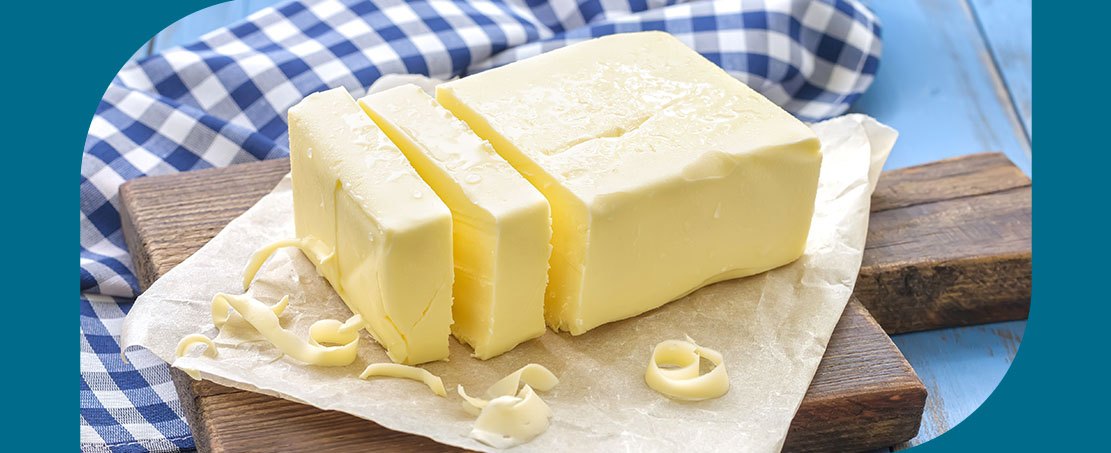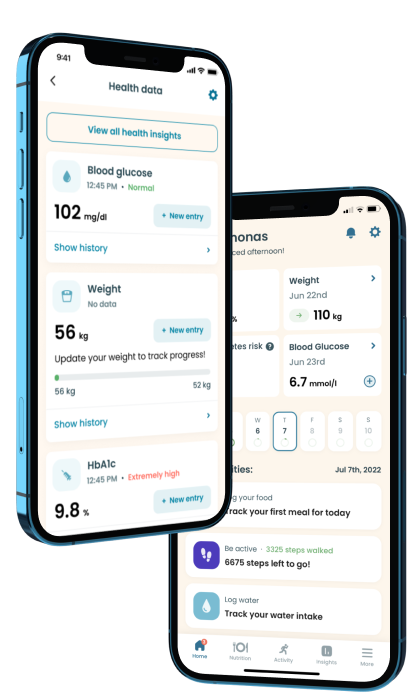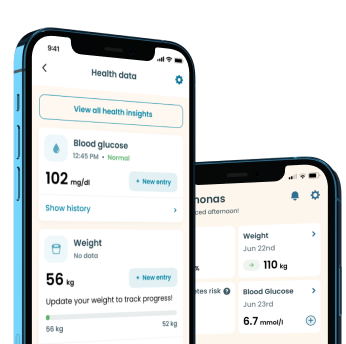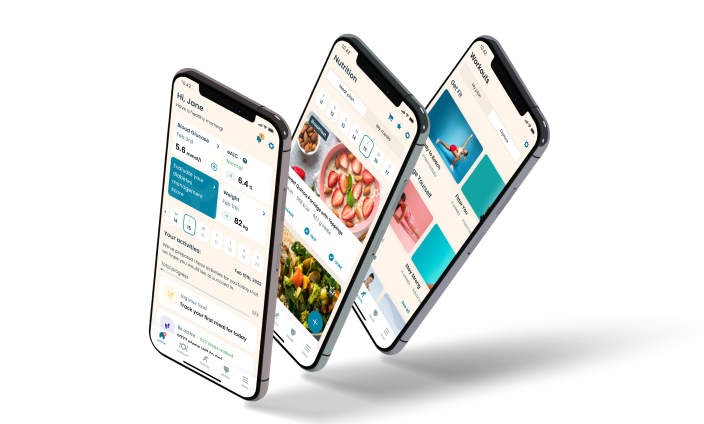Butter and Diabetes

It's ok
0
733 kcal
It will come as a surprise to absolutely nobody that, over the past few decades, in particular, health professionals worldwide have continued to reassess their opinions on butter and how we should be eating and using it in our diet.
Eating butter is something that most Americans do every single day. While once upon this was seen as just a regular part of a routine and balanced diet, the downturn in overall health stats for the country means that things like unsalted butter and other saturated fats are starting to be looked at differently.
Did you know that, on average, an American citizen's annual butter intake is 23 sticks per year? That is nearly 6 pounds of butter per person. We all love the creamy, salty, delicious flavor of the dairy product and plenty of other dairy products. But the truth is that the link between things like butter and weight gain, butter and blood pressure, butter and heart disease, butter and blood glucose/blood sugar, butter and cholesterol levels, and overall butter and diabetes is just too significant to keep ignoring at this point in the 21st century.
Nutritional value
- Protein 0.8 g
- Carbohydrate 0.1 g
- Fat 81 g
- Fiber 0 g
- Sugar 0.1 g
- Cholesterol 215 g
The History Of Butter
To help you better understand how we became such a butter-loving society, let's take a brief look at the history of dairy products.
Ever since settlers were able to create communities including healthy livestock, butter has been a staple of the American diet. During the 1920s, the average American consumed as much as 72 sticks (or 18 pounds) of butter per year.
This, of course, changed when the country entered into the period of the Great Depression when any kind of dairy product started to be seen as a luxury and then continued through the Second World War when butter consumption fell. There came a concurrent rise in the use of margarine instead.
Butter consumption continued to decrease from the 1950s to the 1980s, but interestingly, the levels of eating butter have started to rise again, with an uptick in usage statistics steadily rising from the 2010s to the present day.
Take a quiz
Discover what Klinio app can do for you
Healthy diabetes meal plan crafted just for YOU

Personalized workouts with no equipment needed

Track your progress with smart tracking tools

The Nutritional Value of Butter
Before we get into the specifics of whether or not butter is considered to be a sensible and valid choice for people with diabetes, let's consider the general nutritional value of this particular form of saturated fat.
There is no getting away from it. The stone-cold fact is that butter is an ingredient and product that is 100% fat. What this means in terms of nutrition is that all the calories you gain from eating butter are taken by the body in the form of fat content.
For example, one tablespoon of butter contains approximately 103 calories, which all come from the 11 or so grams of total fat intake. When you break that fat intake down a little more, the single tablespoon contains 7 grams of saturated fat, 3 grams of monounsaturated fats, and 31 milligrams of cholesterol.
While certain foods and products on the market can claim to be healthy fats and heart-healthy fats, it would be fair to say that classic salted or even non-salted butter is not one of them.
Is Butter Recommended For People With Diabetes?
For many years, the levels of saturated fats found in butter and other not-so-healthy foods were strongly discouraged by doctors for people with diabetes due to their long-held association with cardiovascular disease and overall poor heart health.
Plenty of negative health risks can occur from a diet high in saturated fat, the most serious of these being the risk of arteries blocking up and leading to incredibly serious complications like heart disease, stroke, and potentially a fatal heart attack. These connections are backed up by plenty of scientific evidence rather than just medical hearsay.
At this point, the American Heart Association recommends that a person's saturated fat intake should make up for between 5 and 6 percent of their daily calories. For somebody consuming the normal 2000 calories per day, this equates to a small 13 grams (less than half an ounce) of saturated fat.
In normal 'kitchen' terms, this is the equivalent of approximately two tablespoons of butter, and this doesn't even include the clarified butter, natural butter, saturated fats, trans fats, polyunsaturated fat, synthetic fats, unsaturated fats, and monounsaturated fat from other foods you might eat across the day like cheese, milk, poultry, red meat and even things like white bread.
Even in moderate quantities, eating several of these foods in a suitable serving size could be enough to push you over the recommended daily percentages.
For people with diabetes who have to deal with diabetes management on a daily basis, these figures should be taken even more seriously. As a person trying to maintain a diabetic diet, you are constantly making food decisions to maintain cardiovascular disease control and retain good heart health, control blood sugar, lower high blood pressure, high blood sugar, and prevent kidney dysfunction and kidney dysfunction stones.
People with diabetes are at much higher risk of all of these various health problems and the general recommendation is that to manage diabetes best, perhaps the best course of action to take is to remove as much butter, added sugar, and saturated fat as you can from your diet.
Consulting the internet for advice on butter and diabetes can be a treacherous path to take because there are so many unqualified 'experts' online who can say anything that they want to about health and a diabetic diet without being checked or corrected.
You will even come across some sites promoting butter consumption to stave off diabetes or even cure or reverse it. At this stage in the health game, we would hope that any diabetes patients would be more sensible than to believe these unfounded claims.
Though it is important to note that butter and other foods that contain levels of saturated fat don't actually have a direct impact on a person's blood sugar levels (in contrast to carbohydrates, for example), the effects that they do have on the body can cause other health concerns that can either lead to developing diabetes or cause huge complications for people with diabetes and high blood sugar already.
The leading example in this arena is that a diet heavy in saturated fats rather than healthy fats like olive oil can have the effect of causing weight gain. Gaining weight in large amounts can, of course, lead to obesity, and obesity is one of the main factors in a person developing type 2 diabetes.
The Relationship Between Diabetes And Butter
So, now that you have a much better and broader education of butter and the effects that it can have on the body, let's answer some common question questions about how people with diabetes should be handling their relationship with butter on a regular daily dietary basis.
Is Butter Safe For People With Diabetes?
The short answer to this vital question is yes, but it should be consumed in a controlled manner as part of a healthy, well-balanced diet.
Do Butter Saturated Fats Cause Diabetes?
No, butter on its own as a substance is not something that has been identified as being able to cause the development of diabetes within the human body. The problem with butter and its high-fat content are that it can lead to too many total calories in a day, ultimately prompting an unhealthy weight gain.
If a person cannot lose weight, they are at a much higher risk of becoming obese, which can mess with their insulin levels and create a problematic blood glucose level. As we are sure you all know, issues with insulin and an inability to improve blood sugar control are the leading problems in people with diabetes.
Are There Any Types of Saturated Fat Butter That Are Good for People With Diabetes?
If you absolutely have to include butter in your diet, the best option is butter that does not contain added salt. Even better, a butter substitute with a higher olive oil content can be a good alternative. Also, sometimes low-fat cream cheese can have the same creamy satisfaction without as much fat.
The nut butter industry is also one that is proving to be incredibly fruitful for people who wish to stabilize blood sugar rather than raise blood sugar and watch their fat intake.
Is Margarine Better Than Butter?
This is more controversial than you might think.
Margarine was invented by Hippolyte Mège-Mouriès in response to a challenge from Napoleon Bonaparte to find a substitute for butter during a major shortage and is made from vegetable oils.
This has led to the opinion that margarine is better because it contains unsaturated fat, which is considered healthier. While this is true, some kinds of margarine may contain trans fats. Trans fat raises LDL (bad) cholesterol and lowers HDL (good) cholesterol.
The answer is to avoid stick forms of margarine that often contain trans fat and instead opt for tubs or spread margarine. Always read the label to be sure.
You can also buy margarine-type spreads that contain plant sterols that have been shown to lower cholesterol.
Is Nut Butter Good For Diabetes And Blood Sugar?
Nut butter is, in essence, very finely ground-up nuts that have been put through a water saturating process to impart flavor to a liquid that can be used as a successful butter substitute. Ingredients such as oil or salt can sometimes be added for flavor, along with sugar.
Too much added sugar should be avoided when choosing between the many types of nut butter available and anything that might have been heavily chemically altered. They can be seen as a good low glycemic index alternative to traditional butter, but again, you need to watch your portion size.
Don't make the mistake of thinking that you can eat as much nutty butter as you want to without having to worry. If the calorie count is high enough, you might as well be eating chicken nuggets or protein bars to excess!
Does Butter Contain Sugar?
The answer is no. Butter does not contain any significant amount of sugar, nor does it have added sugars. It is made from (usually cow's) milk, which contains lactose or milk sugar, but this becomes only a trace amount after the churning process and is certainly not enough to raise blood sugar levels.
Is Ghee Different From Unsalted Butter?
Ghee is a type of clarified butter that is most commonly used in Indian cooking. Clarifying butter means that liquid is removed from the butter as it simmers over a heat source, leaving only the solids.
Though the process is different, the calorie output is the same in the sense that 100% of the calories in ghee come from fat. Therefore, ghee won't have any different impact on your blood sugar levels than traditional butter, but at the same time, it is also not a great dietary choice and would not be recommended in the course of certified diabetes care.
Conclusion
Hopefully, all of the above information has given you a good idea of what your relationship with butter should be as a person with diabetes.
The Department Of Health And Human Services will no doubt update their advice for years to come as more is discovered about diabetes, but for now, try to remember all of the above information and follow some of these simple tips at the same time.
-
Don't add butter to any meal in an over-the-top amount. A little can go a long way.
-
Consider incorporating a vitamin D supplement in your diet to give your body a much-needed boost alongside your diabetes management efforts.
-
Focus on a daily eating plan that includes lots of whole grains, dried fruit, and other foods that either don't require butter or have plenty of health benefits to counteract any butter that you might eat in other parts of the day.

Download Klinio app!
Get more by downloading our free Klinio App. Analyze your health, form new habits and manage your diabetes anytime, anywhere.
OR
SCAN QR CODE



GET THE APP


